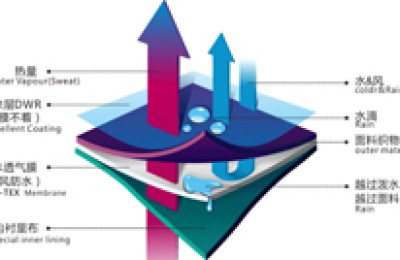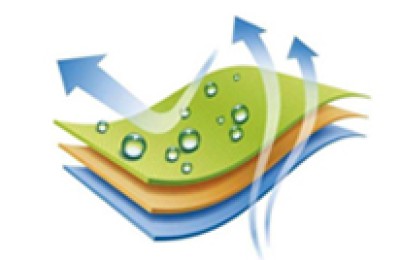Through the joint efforts of dye and auxiliary chemical workers and dyeing and finishing workers, problems related to dyeing and serious fiber damage have been better solved. How to improve the dimensional stability of cotton knitted fabrics and obtain good fabric surface effects (no wrinkles, no friction hairiness, etc.) has long been a topic of concern in the knitting industry. For this reason, many process technologies have been researched and established and developed. Related equipment, but has never achieved ideal results. There are still phenomena such as insufficient size stability and serious wrinkles and creases on the fabric.
Causes of shrinkage of cotton knitted fabrics and wrinkles and creases on the cloth
1. Reasons for shrinkage of cotton knitted fabrics
The shrinkage rate, which measures the degree of fabric shrinkage, is the result of washing in a drum-type washing machine, that is, the fabric shrinks freely in a completely relaxed state in water. Not only will the dyed and finished plain fabrics and ready-made garments shrink during loose washing, but the newly knitted knitted fabrics will also shrink in size when soaked in water in a completely relaxed state. The shrinkage process of knitted fabrics when washed with water or relaxed in water is completed by fiber shrinkage, yarn shrinkage and fabric structure shrinkage.
Fiber shrinkage In spinning, spinning (chemical fiber), weaving and dyeing and finishing processes where the tensile force is large, the fiber will elongate due to external force stretching and form internal stress in the fiber. , and the drying effect in the stretched state, the cohesion force between fibers, and the interweaving resistance between yarns will temporarily fix the elongated state and internal stress; when treated with water or water vapor, water molecules will weaken the fibers The force between macromolecular segments reduces the retraction barrier of the macromolecular segments, and the fiber will shrink under the action of internal stress.
Filament fabrics, yarn fabrics with smaller twist and regenerated cellulose fiber fabrics, during wet dyeing and finishing processes (such as scouring, bleaching and dyeing), the fibers are easily stretched and elongated by external forces, which will cause Large shrinkage; cotton knitted fabrics, if the loose processing method is used in the scouring, bleaching and dyeing processes, the fibers will not be stretched. The shrinkage caused by the fibers is very small, but if the stretching process is used Processing methods with greater tension will produce greater fiber shrinkage. It must be noted that the fiber deformation caused by external force stretching will be difficult to recover due to the cohesion force between fibers and the interweaving (coil knotting points) resistance between yarns. Therefore, attention should be paid to the scouring and bleaching of cotton knitted fabrics. Control of tensile external force during dyeing process.
Yarn shrinkage Yarn shrinkage comes from two aspects: the water absorption swelling of the fiber and the elongation of the yarn due to external force.
First of all, water-absorbing swelling of fibers in water will cause the length of the yarn to shrink. The greater the swelling of the fiber fabric, the greater the shrinkage caused by this.
△Swelling properties of several cellulose fibers

△ Principle diagram of yarn shrinking due to fiber swelling
Fiber swelling causes the effective diameter of the yarn to increase, and it is impossible for fibers that cannot stretch or even become shortened (which can be measured by the stroke of the fiber around the yarn axis) to When the yarn is untwisted, the position and posture in the yarn can only be adjusted by reducing the stroke along the yarn axis (from L1 to L1′) to shorten the yarn.
In addition, during the wet processing of dyeing and finishing, excessive tensile external force or the tensile external force is not too large but acts continuously on the fabric for a long time, resulting in the fabric having no chance to relax and shrink, and it will inevitably cause This causes yarn elongation and yarn twist reduction, and the water in wet processing will play a twist-setting role in cellulose fiber yarns.
△Yarn stretching state diagram
The yarn in the free state can be completely retracted by this stretching, but The yarns in the fabric are difficult to recover due to the cohesion between the fibers and the interweaving resistance between the yarns. It is difficult to retract only through overfeeding, tentering, rubber blanket preshrinking and other finishing methods. However, in the roller Yarns stretched by fiber swelling can be retracted in a washing machine or in a water treatment that completely relaxes the fabric.
Fabric shrinkage cotton fiber absorbs water and swells in water. In addition to causing changes in the yarn structure, it also causes changes in the loop structure of the knitted fabric. Fiber swelling causes the knitted fabric to shrink, as shown in the figure below.
Note: a and a′ are the coil widths before and after water swelling; b and b′ are before and after water swelling. The height of the coil; c and c′ are the distances between the inner coil yarns at the coil knotting point before and after water absorption and swelling.
First of all, fiber swelling increases the effective diameter of the yarn. When the yarn cannot be twisted and the yarn itself is shortened, at the node of the coil sleeve, the only way is to increase the coil width and shorten the coil height. Or reduce the distance between the loops to adjust the three-dimensional space of the knitted loops.��) wet processing, in which case the fabric morphological changes caused by the fiber swelling due to water absorption are uniform and orderly. There are some low-tension continuous scouring and bleaching machines used for open-width processing of open-width knitted fabrics, which use this method to prevent wrinkles.
Method 3
Before the fabric is subjected to irregular tension and pressure, the fibers are irreversibly swollen under the action of regular external forces. The first process is mercerization. The mercerized cotton knitted fabric will not produce so-called dead pleats during the rope bleaching and dyeing processes. The mercerized cotton fabric has higher dimensional stability.
During the first wet treatment of cotton knitted gray fabrics, the shape of the fabric is deformed due to water absorption and swelling of the fibers, and the resulting impact on the dimensional stability and surface effect of the fabric Influence. The best method is to place the fabric in a completely relaxed state in water, and allow the fabric to shrink freely and evenly through fiber swelling. This can not only achieve good dimensional stability but also ensure a smooth cloth surface.
Pay attention to the shaping effect of the mercerization process on cotton knitted fabrics, which can cause irreversible swelling of cotton fibers. The mercerized cotton knitted fabric not only has high dimensional stability, but also will not cause wrinkles or creases in the fabric no matter how large the external force (pressure or tension) is.
Pay attention to shrink-proof finishing technology. Over-feeding and anti-shrinking technology (over-feeding expansion, over-feeding drying, over-feeding calendering, etc.) is not the entire content of anti-shrinking technology. Some mature cotton woven fabric anti-shrinking technologies such as rubber blanket pre-shrinking machine anti-shrinking technology, etc. It should be promoted and applied in anti-shrinkage finishing of knitted fabrics. </p





